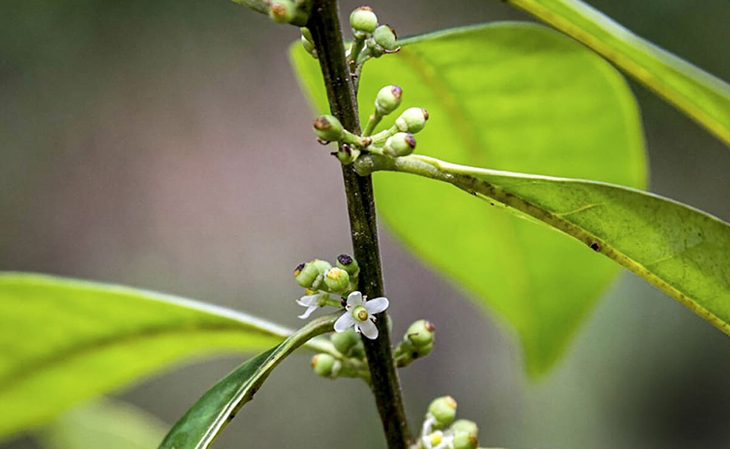
After nearly two centuries of being presumed extinct, a small holly tree species native to Brazil has been rediscovered, marking an extraordinary event in the realm of conservation. This momentous find is part of a global initiative aimed at locating species that have eluded discovery for decades or even centuries. The progress has been remarkably promising, with nine out of the 25 Most Wanted Lost Species successfully located.
The species in question, Ilex sapiiformis, commonly known as the Pernambuco holly, was located in the city of Igarassu, in the Brazilian state from which it derives its name. Remarkably, four individual trees were identified during this rediscovery.
The Pernambuco holly, capable of reaching heights between 26 and 40 feet (8 to 12 meters), was identified by its petite green flowers. Botanists, constituting the dedicated search team, meticulously examined museum specimens for hours before making this significant breakthrough.
When their initial efforts yielded no results, the team shifted their focus to herbaria collections in museums and arboretums, which had not yet been digitized. These collections included sketched images and pressings, ultimately leading to the triumphant rediscovery of this thought-to-be-extinct species.
“Nature surprises us. Finding a species that hasn’t been heard of in nearly two centuries doesn’t happen every day,” Project team member, Juliana Alencar, said in a recent statement. “It was an incredible moment.”
“We were all anxious to find the plant,” said another team member—Prof. Milton Groppo. “And it was exciting when we found the first individual of Ilex sapiiformis, thanks to the keen eyes of Mr. Lenilson, who was able to find some white flowers in a tree alongside the dirt road. It’s like finding a long-lost and long-awaited relative that you only know by old portraits.”
The expedition, spearheaded by Gustavo Martinelli, an ecologist affiliated with Navia Biodiversity Ltd. and supported by the organization Re:wild, has been a beacon of hope for the world’s endangered species. Thanks to their efforts, eight species once thought extinct have been rediscovered across the globe. Not only did they unveil these creatures to the world, but they also meticulously documented each species’ conservation status and proposed actionable measures to ensure their survival.
Among the remarkable findings was the Fernandina giant tortoise from the Galapagos, a species Re:wild intended to search for, but the Galapagos Conservancy preempted them with a successful search and subsequent lab tests. The expedition’s accomplishments extend beyond this, with checkmarks added next to various species on the “25 Most Wanted Lost Species” list. Jackson’s climbing salamander, the silver-backed chevrotain, the Somali sengi, the velvet pitcher plant, Wallace’s giant bee, Voeltzkow’s chameleon, and the Sierra Leone crab are among the fortunate rediscoveries.
The magnitude of their success has necessitated an update to the quest, introducing new entries such as the Togo blind mouse, the fat catfish, and the big puma fungus. The expedition also added the Holly to the list, although it has already been located. Notably, Re:wild had previously funded an unsuccessful expedition for the Ilin Island cloudrunner from the 2017 list. Additionally, the Wondiwoi tree kangaroo, another existing entry, was believed to have been photographed in 2018, but the image quality was insufficient to confirm its identity definitively.
To immortalize these newfound species and raise awareness about the importance of conservation, talented artists created watercolor paintings of each one. These artworks serve as a poignant reminder to the world that losing a species is akin to losing a priceless masterpiece.
In Brazil, a dedicated team from Jardim Botânico de Recife is diligently monitoring the four Pernambuco holly trees discovered during the expedition. They return to the site weekly, eagerly anticipating signs of fruiting. Their ultimate goal is to collect seeds from these trees and nurture them into new life, ensuring that the legacy of these extraordinary species endures for generations to come.
What are your thoughts? Please comment below and share this news!
True Activist / Report a typo


